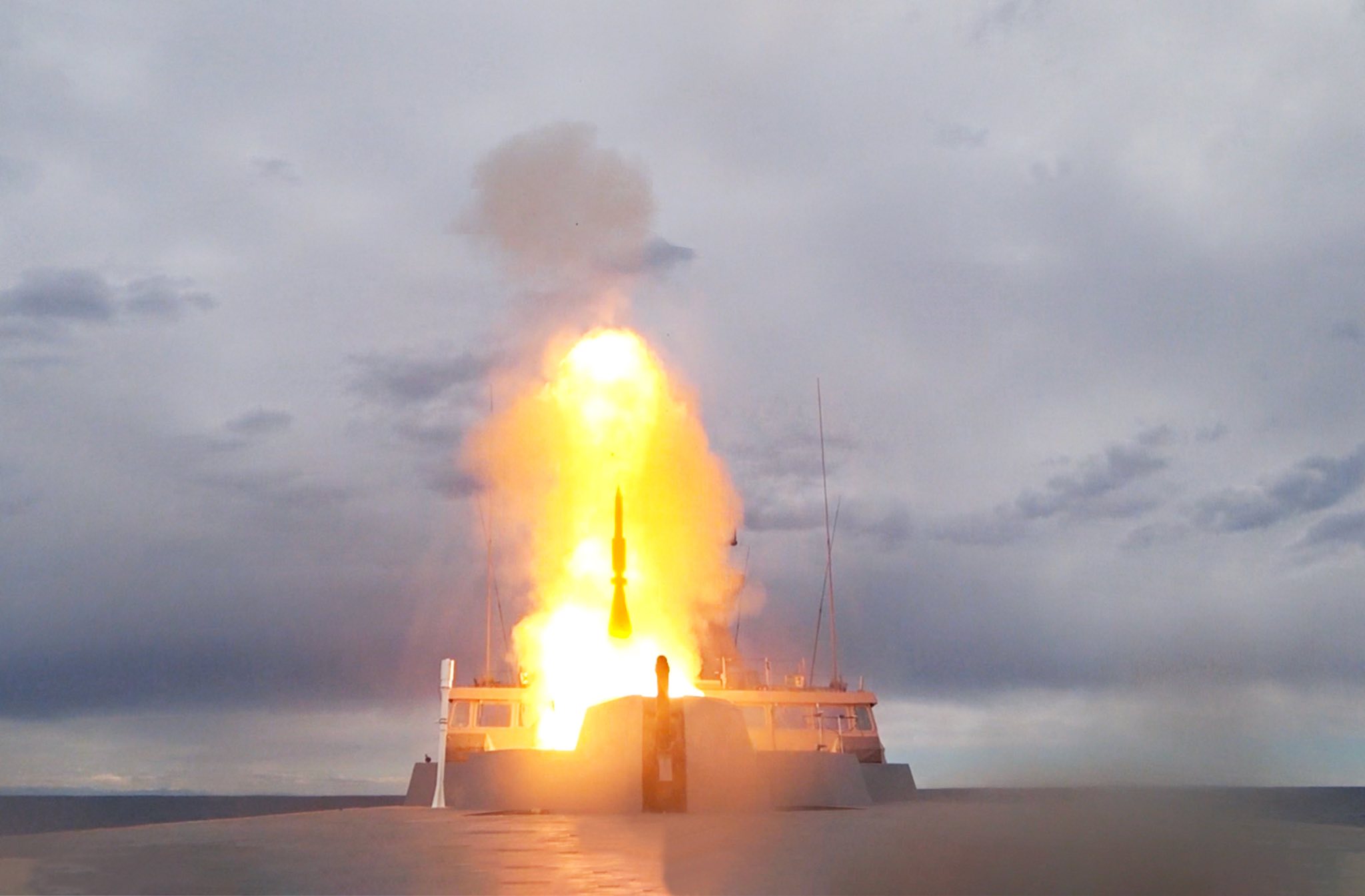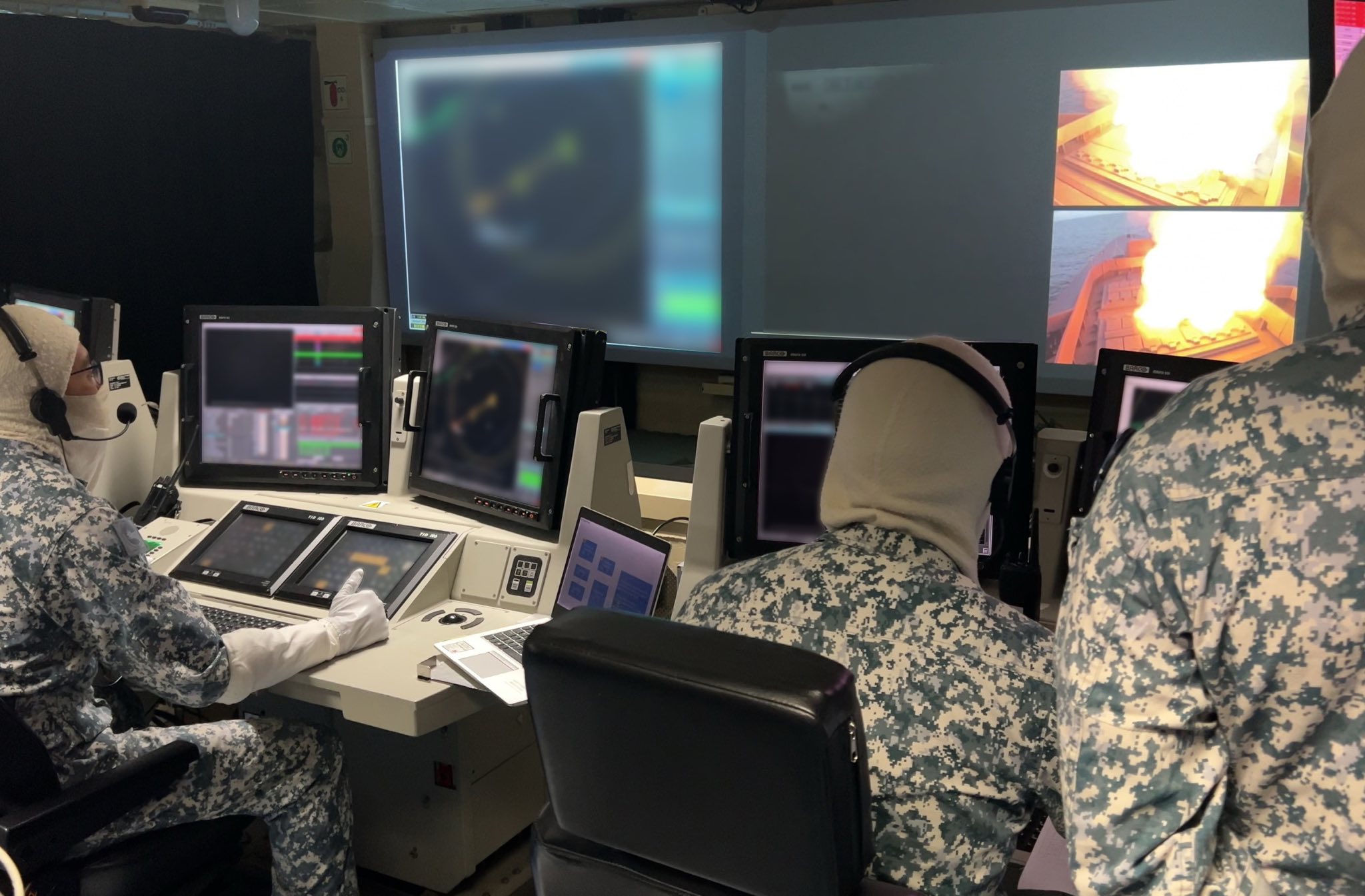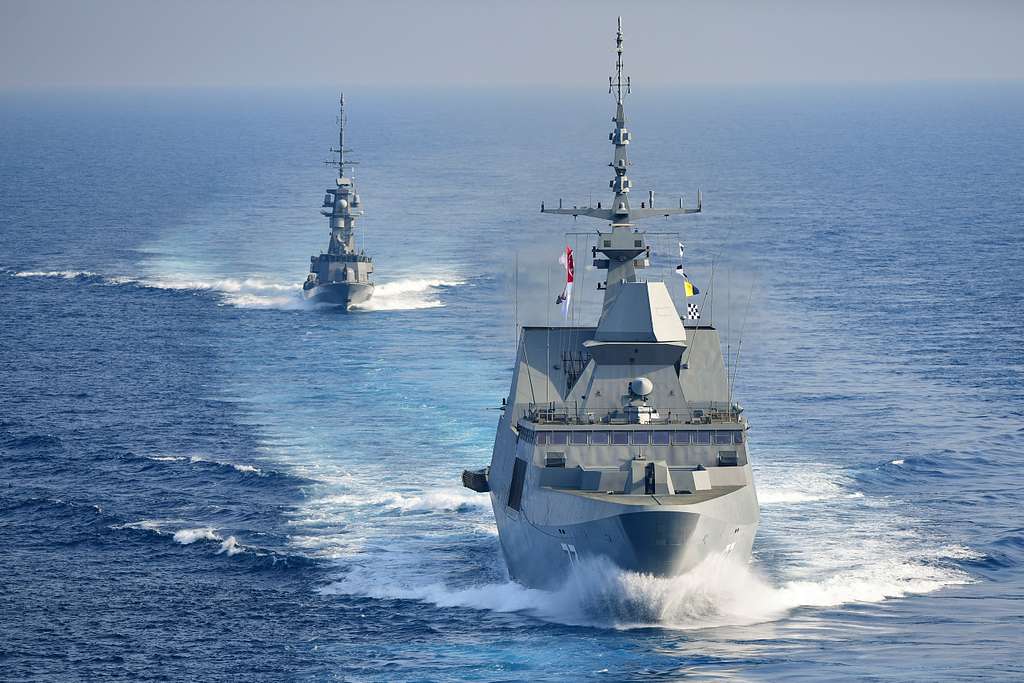Singapore Navy Fires Aster Missile from Formidable-Class Frigate in French Waters, Showcasing Strategic Deterrence and Combat Readiness
“This was an important opportunity for the RSN to hone our high-end warfighting capabilities, and validate the readiness of our systems,” the Singapore Navy stated via its official Facebook page.
(DEFENCE SECURITY ASIA) — In a significant demonstration of maritime combat readiness, the Republic of Singapore Navy (RSN) has successfully conducted a live-fire test of an Aster surface-to-air missile from its stealth frigate, RSS Formidable, in the strategic waters off Toulon, France.
Although the specific date of the launch remains undisclosed, the statement by Republic of Singapore Navy confirmed that the missile intercepted and destroyed a hostile drone target, validating the system’s effectiveness in a real-world threat simulation.
“This was an important opportunity for the RSN to hone our high-end warfighting capabilities, and validate the readiness of our systems,” the Singapore Navy stated via its official Facebook page.
The launch was observed by the RSN’s senior leadership, including Chief of Navy Rear-Admiral Sean Wat and Fleet Commander Rear-Admiral Kwan Hon Chuong, underlining the importance of the trial at the strategic and institutional level.
“We also thank our partners from the Defence Science and Technology Agency (DSTA), as well as our French counterparts from the Marine Nationale, Défense Méditerranée – Cecmed, and the Direction Générale de l’Armement for their close collaboration in making the firing a success,” the RSN added.
The Aster missile family—developed by MBDA and fielded by several NATO navies—represents a critical component of Singapore’s multi-layered naval air defence network, with the Aster 15 covering medium-range threats and Aster 30 extending the engagement envelope against longer-range and higher-speed intrusions.
With an effective range of 30 kilometres, the Aster 15 is engineered to counter high-speed airborne threats including fighter aircraft, cruise missiles, and unmanned systems operating at low altitudes, a crucial feature for defending vital naval assets in littoral and congested sea lanes.

The Aster 30, by contrast, can reach out to between 120 and 150 kilometres depending on its integration platform, and is capable of intercepting manoeuvrable supersonic targets, tactical ballistic missiles, and saturation attacks—a capability that elevates the Formidable-class to the forefront of Indo-Pacific surface warfare.
Both missile variants are deployed using the SYLVER A50 vertical launch system (VLS), a combat-proven modular launcher that enables rapid 360-degree engagement and seamless integration with multi-function radar systems like the Thales Herakles, enhancing response times and fire control precision.
This dual-layered missile defence system provides the RSN with a strategic edge, offering first-layer protection to both the ship and the naval task force it escorts, an imperative in an era of proliferating missile threats and grey-zone maritime tensions across the South China Sea.
Commissioned between 2008 and 2009, the RSN’s six Formidable-class frigates were born out of a high-technology defence partnership between Singapore and France’s Naval Group (formerly DCNS), based on the stealthy La Fayette-class blueprint and tailored for the operational realities of Southeast Asia.
The lead vessel, RSS Formidable, was constructed in France, while the subsequent five frigates were built domestically by ST Marine under a technology transfer programme that significantly strengthened Singapore’s indigenous shipbuilding and defence engineering capabilities.

The six-ship fleet—RSS Formidable, RSS Intrepid, RSS Steadfast, RSS Tenacious, RSS Stalwart, and RSS Supreme—now form the principal surface strike arm of the RSN, capable of projecting maritime power well beyond Singapore’s immediate waters and serving as force multipliers in coalition operations.
Designed with a low Radar Cross Section (RCS), minimal infrared and acoustic signatures, and reduced electromagnetic emissions, the Formidable-class embodies stealth as both a survivability feature and a force projection asset in the contested and surveillance-heavy Indo-Pacific maritime theatre.
Stretching 114.8 metres in length and displacing approximately 3,200 tonnes, each frigate is optimized for blue-water operations and high-tempo multi-domain warfare, with an advanced sensor suite and open-architecture combat systems that allow rapid upgrades and mission reconfiguration.
Central to the ship’s combat capabilities is the Thales TACTICOS Combat Management System, integrated with the Herakles 3D radar, electronic support measures (ESM), electronic countermeasures (ECM), and a bow-mounted sonar enabling formidable anti-submarine warfare (ASW) operations.
Offensively, the frigates carry eight Harpoon Block II anti-ship missiles—soon to be replaced by the Israeli-Singaporean-developed Blue Spear missile system—as well as a 76mm OTO Melara Super Rapid naval gun, a Phalanx Block 1B close-in weapon system (CIWS), and dual triple-launcher Eurotorp MU90 torpedoes.

The aviation suite includes a helicopter deck and hangar capable of supporting a Sikorsky S-70B Seahawk, significantly expanding the ship’s surveillance range, submarine hunting capabilities, and maritime interdiction roles.
In terms of propulsion, the frigates rely on a Combined Diesel and Diesel (CODAD) system powered by four MTU engines, delivering a top speed of 27 knots and an operational range exceeding 4,000 nautical miles at cruising speed, enabling extended regional deployments without replenishment.
With a crew complement of just 70 to 90 personnel, the frigates leverage a high degree of automation and networked systems integration to reduce manpower requirements while maximizing operational output and survivability under combat conditions.
Singapore’s emphasis on self-reliance is evident in the frigates’ electronic systems, with significant contributions from local defence technology firms including DSTA and ST Electronics, which also play critical roles in lifecycle maintenance and system upgrades.
In line with its long-term naval modernization trajectory, the Republic of Singapore Navy announced in 2023 the commencement of a Mid-Life Upgrade (MLU) programme for all six Formidable-class frigates, aiming to extend their combat relevance well into the 2040s.
The MLU, awarded to ST Engineering Marine and supported by Naval Group, is expected to involve comprehensive upgrades to combat systems, sensor arrays, propulsion subsystems, and onboard power management to support next-generation weaponry and autonomous platforms.
This modernisation effort comes at a pivotal moment as regional naval forces—including China’s PLA Navy, Indonesia’s growing submarine fleet, and the Australian Navy’s AUKUS-driven enhancements—reshape the Indo-Pacific’s maritime balance, making fleet readiness and technological edge paramount.

Technical Specifications – RSN Formidable-Class Frigates
Class & Origin: Formidable-class (based on France’s La Fayette-class); 6 units; designed by Naval Group; built by Naval Group and ST Engineering Marine.
Dimensions & Displacement: 114.8 metres length; 16.3 metres beam; 3,200 tonnes displacement; 6 metres draught.
Propulsion: CODAD configuration with 4 × MTU diesel engines; 27-knot max speed; 4,000+ nautical mile range; 70–90 crew.
Combat Suite: Thales TACTICOS CMS; Thales Herakles 3D radar; ESM/ECM suite; bow-mounted sonar for ASW.
Weapons:
• 32-cell SYLVER A50 VLS (Aster 15/30)
• 8 × Harpoon Block II (to be replaced by Blue Spear)
• 1 × 76mm OTO Melara naval gun
• 1 × Phalanx Block 1B CIWS
• 2 × Triple 324mm MU90 torpedo launchers
Aviation: Helicopter deck and hangar for 1 × Sikorsky S-70B Seahawk
Stealth & Modernisation: Low RCS, IR, acoustic, EM signatures; modular design; interoperable with allied fleets; MLU-ready.
As regional naval dynamics continue to evolve, Singapore’s Formidable-class frigates stand not merely as guardians of national sovereignty, but as critical instruments of strategic deterrence and cooperative security in an increasingly volatile maritime domain.
— DEFENCE SECURITY ASIA


